COPLIN PLANTATION — Every afternoon, by at least 1 p.m., deer start gathering by the dozen in Harriet and Basil Powers’ front yard.
Almost any time of day, however, one or two are there. They’re nearby, either behind the barn or maybe licking peanut butter off the birdfeeders by the porch.
As 3:30 p.m. approaches, more begin to gather.
They’ve learned that every day at that time, Basil Powers will feed all that come. That’s nearly 100 that have arrived, expecting corn.
Harriet, 80, and Basil, 81, have been feeding the deer for more 50 years, ever since they moved into the farmhouse on Kennebago Drive, a dead-end dirt road with a few houses and about 70 camps at the end.
Harriet’s parents lived in the house before them and were the first generation to feed the deer.
Harriet said her mother told her she started feeding the deer after accidentally leaving food for them that had been intended for the family’s horses.
Her mother said she had taken the horses to a nearby brook for a drink and sprinkled grain on the ground for them. A day later, she noticed deer tracks at the watering spot and began the family tradition. She even added apples to a clothes line for the deer.
Her parents began to feed the deer regularly in the 1940s; and when she and Basil moved back into the family home, they took over the feeding.
The horses are gone now, but the corn is still poured out by the bucket. They had distributed each 5-gallon bucketload by hand until their son made a bright orange bucket, painted to match Basil’s tractor, that attaches to the back of the tractor and dumps the corn.
The dozen deer that her parents fed grew to, at one point, 200.
“I guess they went out and started having babies,” Basil said.
The number that turns out each afternoon has waxed and waned over the decades, but Basil thinks 80 to 100 deer come to eat now.
Harriet said this winter, with the help of donations from visitors, they bought 8 tons of corn at $300 per ton. When they bought the feed from a supplier in Canada, the company named a variety after them called “Basil’s deer feed,” and people would come to the store and ask for “Basil’s,” Harriet said.
However, the cost, along with Basil’s health, are catching up with them. He walks with crutches because of a failing hip, which is compounded by other health problems.
Basil said because of the demands, he and his wife have said this year, like many years before, will be their last year; but then they always continue anyway.
While pain from Basil’s health problems brings him down, his wife said he brightens up when its time to feed.
By the time 3:30 comes around, the yard is filled with deer.
On a recent afternoon, as he pulled out of the large storage trailer they use to store deer feed, he yelled over the noise of the tractor, “Ring the bell!”
His wife pulled a rope attached to a large dinner bell hanging on the front of the barn.
Most of the 80 deer who showed up were already in the open, but a handful leaped out of the woods and into their yard from different directions when they heard the clanging.
Basil used to call out for the deer when it was time to feed, but one day he had a cold and told her he couldn’t call for them because his throat hurt, Harriet said.
As a joke, she suggested he get a dinner bell to let them know it was time to eat. Soon after, he rang a cow bell and eventually installed the large dinner bell on the front of the barn.
He feeds them every day, driving in loops around the farm, leaving a trail of grain that they line up along. Along the way, he yells out to the ones he’s named, calling out, “Here Archie!” “Come on over, Peewee!”
When asked how he can tell the animals apart, he laughed and said it wasn’t hard because he spends so much time with them. He said he can distinguish them by their different markings and fur color as well as their different personalities.
“Deer are really a lot like people,” he said.
They have a picture of him brushing one of the deer as though it was a horse.
“Oh, he sure loved that,” Basil said, smiling at the picture.
He feeds two groups of deer — one that gathers in the front yard and a group that gathers behind the barn. He said he feeds them separately to prevent the fighting that would occur if he were to make them share food in one spot
“They’re like the Hatfields and McCoys,” he said, referring to the famous feuding families of 19th-century Appalachia.
Harriet said the deer leave behind droppings and tear up the yard with their tracks, “but we’ll be one of the first people in town to have a green lawn.”
The Maine Department of Inland Fisheries & Wildlife discourages people from feeding deer, but the couple continues to do it anyway.
The Powerses said the department has never told them to stop feeding the deer, though they know the agency discourages it.
Doug Rafferty, a department spokesman, said no rule prohibits feeding the deer, but his department has health and safety concerns about drawing a large gathering of deer by feeding them.
He said disease can spread quickly when that many deer are brought together, and they also may cause a traffic accident.
“We understand how much people love to see the deer, but you have to remember that they’re wild animals, and they know how to handle themselves without help from people feeding them,” he said.
While there were no visitors Tuesday, the Powerses have weekly, sometimes daily, visitors who come to watch.
They have a guest book signed by people from across the U.S. and other countries, too.
Basil said a Buddhist monk from Nepal once was visiting a friend in the area and stopped by to watch. Visitors from Germany, Hungary, New Zealand and Australia have signed the book, too.
The couple said many of the visitors come to the area for the Sugarloaf Mountain Resort ski area and then stop at their house after hearing stories about the deer.
From the ski area, they take Carrabassett Drive west, turn left onto Rangeley Road for about five miles, turn right onto the unmarked Kennebago Road, then drive until they see a sign that says “Bucks for Doe, Dough for Bucks” at the beginning of the driveway.
Basil said some of his favorite visitors have been children from urban areas who are fascinated by the deer.
He said after one group of children left, he and his wife found $2.27 in change in a box by the front of the driveway where they collect donations to pay for the feed.
“They just love it. They come from the city, and they’ve never got to see anything like this,” he said.
Kaitlin Schroeder— 861-9252
kschroeder@mainetoday.com
Send questions/comments to the editors.

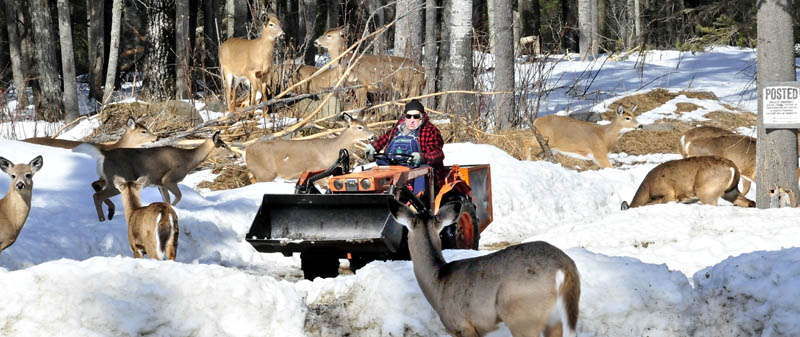
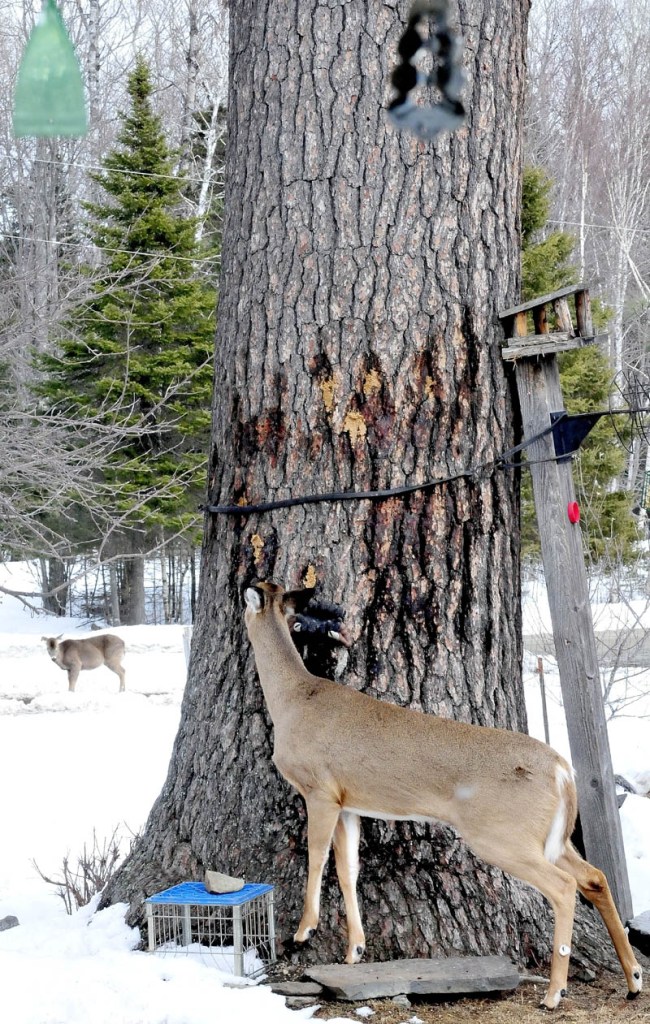
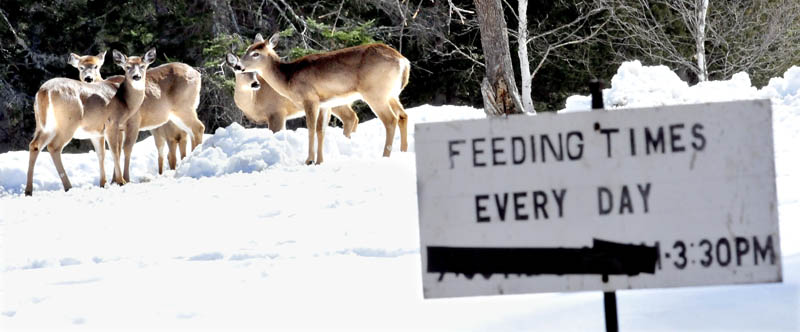
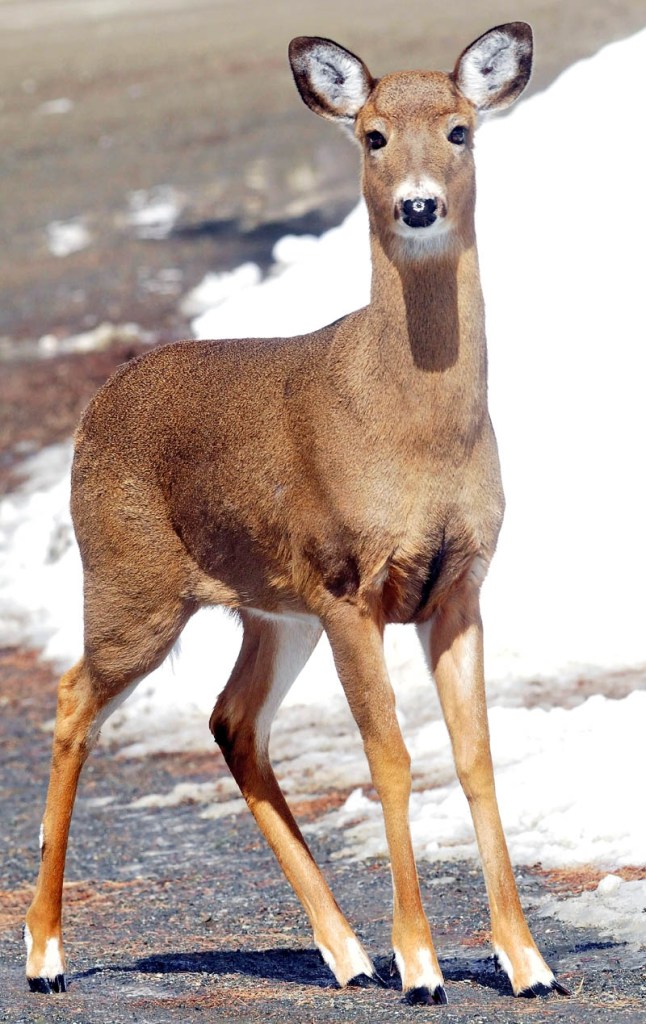
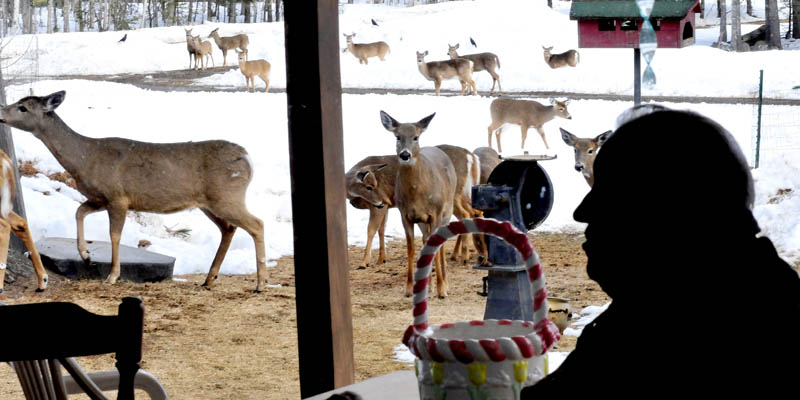
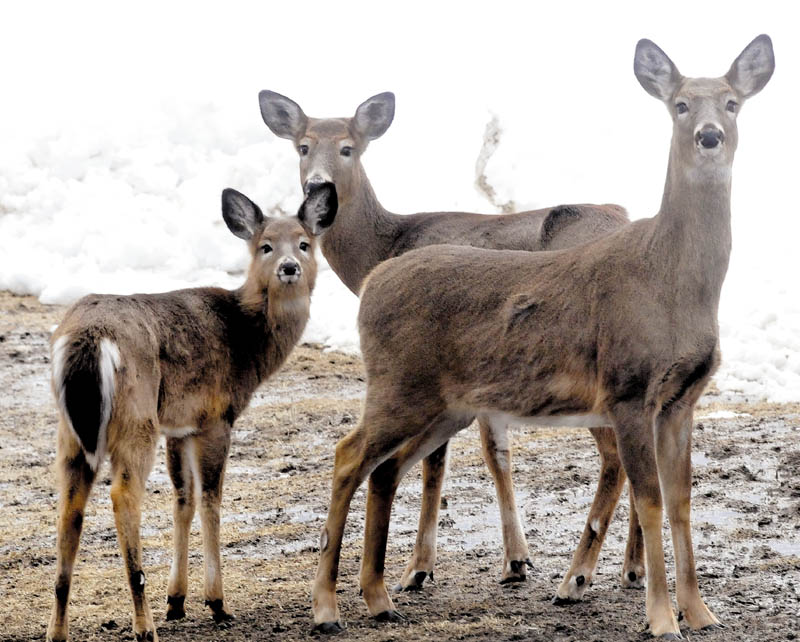
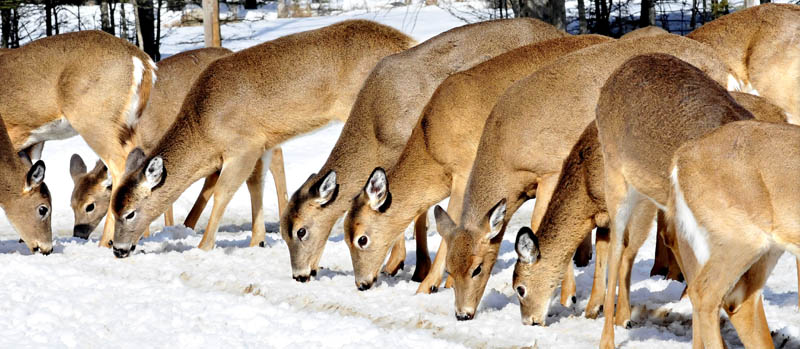
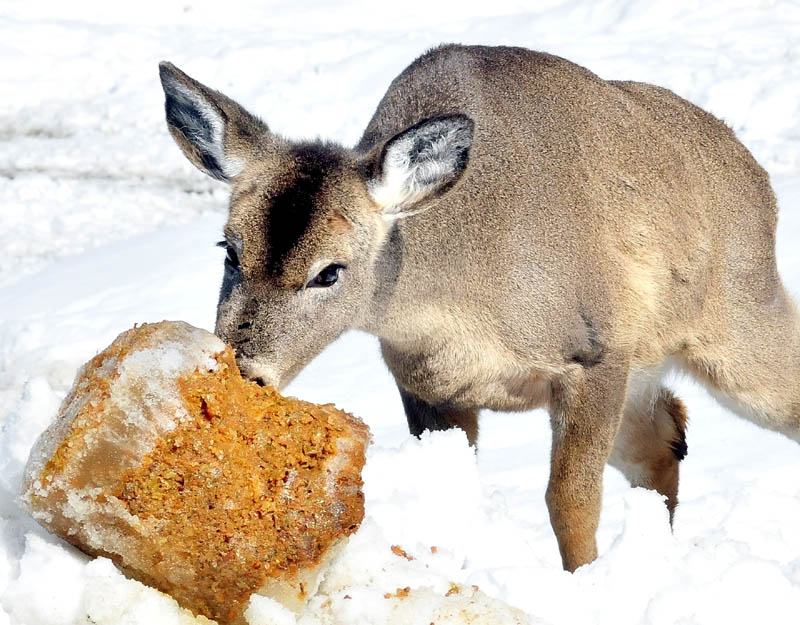


Success. Please wait for the page to reload. If the page does not reload within 5 seconds, please refresh the page.
Enter your email and password to access comments.
Hi, to comment on stories you must . This profile is in addition to your subscription and website login.
Already have a commenting profile? .
Invalid username/password.
Please check your email to confirm and complete your registration.
Only subscribers are eligible to post comments. Please subscribe or login first for digital access. Here’s why.
Use the form below to reset your password. When you've submitted your account email, we will send an email with a reset code.